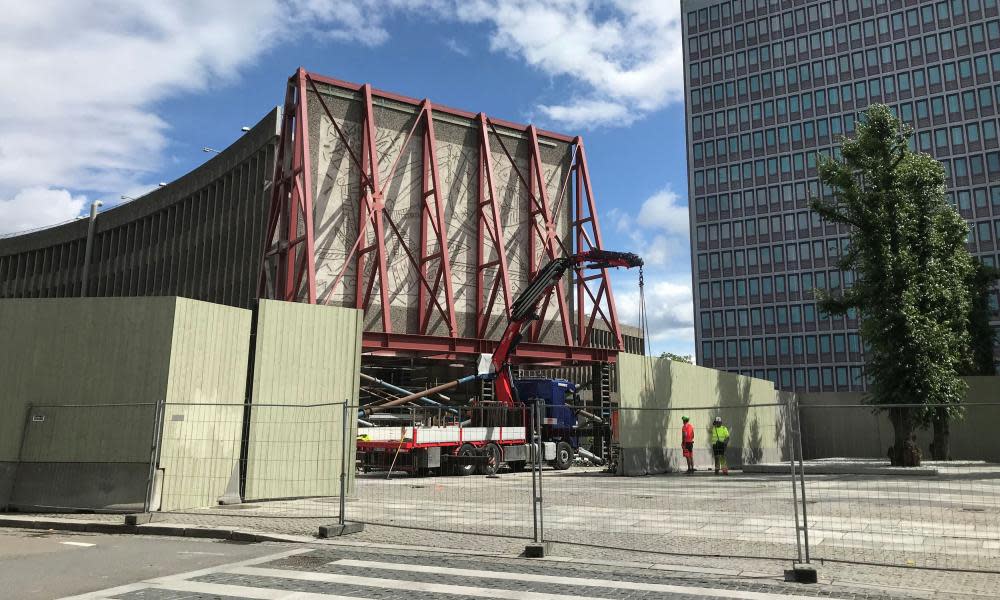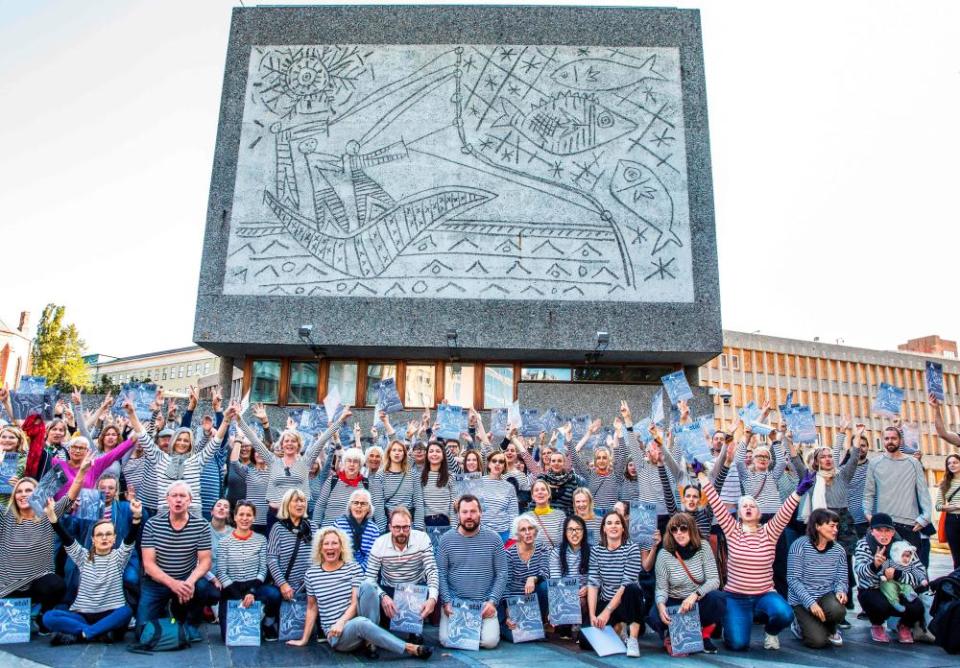Protests as Norway begins tearing down building adorned with Picassos

Amid protests, Norway’s government has begun tearing down a landmark building adorned with giant murals by Pablo Picasso as part of efforts to rebuild government headquarters damaged in the 2011 terrorist attack by the rightwing extremist Anders Breivik.
The Y-block office building in Oslo, with a Picasso drawing sand-blasted on to a 250-tonne section of the facade, will be replaced by a modern, safer development, the government says.
The demolition has sharply divided opinion: some say the 50-year-old brutalist structure is ugly and deserves to be razed, while others have called for its protection.
Related: ‘We are taking the island back’: Norway’s long road back to Utøya
Picasso collaborated with the Norwegian sculptor Carl Nesjar, who turned designs by the Spanish artist into massive concrete works in New York, Barcelona, Oslo and other cities.
Using an entire outer wall of the Y-block building, Nesjar gave Picasso’s The Fishermen a prominent place in the Norwegian capital, and also blasted The Seagull, a floor-to-ceiling drawing, on to a 60-tonne wall in the lobby.
The low-rise structure, built in 1969 and so named because of its shape as seen from the air, housed the education ministry until 22 July 2011, when Breivik detonated a large bomb nearby.
Both artworks will be removed and preserved to be installed elsewhere, although campaigners say the building and the murals belong together.
In addition to hoping to preserve an architectural work typical of the 1960s, opponents of the destruction invoke a symbolic argument: that the government buildings should remain standing precisely because the rightwing extremist tried to tear them down.

One campaigner, the Norwegian singer-songwriter Elvira Nikolaisen, told Reuters: “There is a grieving process that this is happening.” But she added: “At the same time, the spirit that many displayed to campaign to protect the building has been very positive. People have woken up to the value of this art.”
The H-block building was home to the prime minister’s offices until Breivik blew up a van loaded with 950kg of explosives at its base, before he went on to carry out a mass shooting on the island of Utøya.
The attacks, which killed 77 people, were Norway’s worst peacetime atrocity.
Several nearby buildings were damaged in the blast and have been torn down, while an office tower that also contains some of Picasso’s work will be restored.
The Y building, boarded up since 2011 but with little structural damage, could have been repaired, but the government said its location over a road tunnel exposed it to attack.

